If you’re an avid gardener, you know that pests can be a major problem. They can damage your plants and ruin your harvest, leaving you frustrated and disappointed. Fortunately, there are ways to manage pest infestations without resorting to harmful chemical pesticides. One of the most effective methods is biocontrol, which involves using natural predators and other biological agents to control pests.
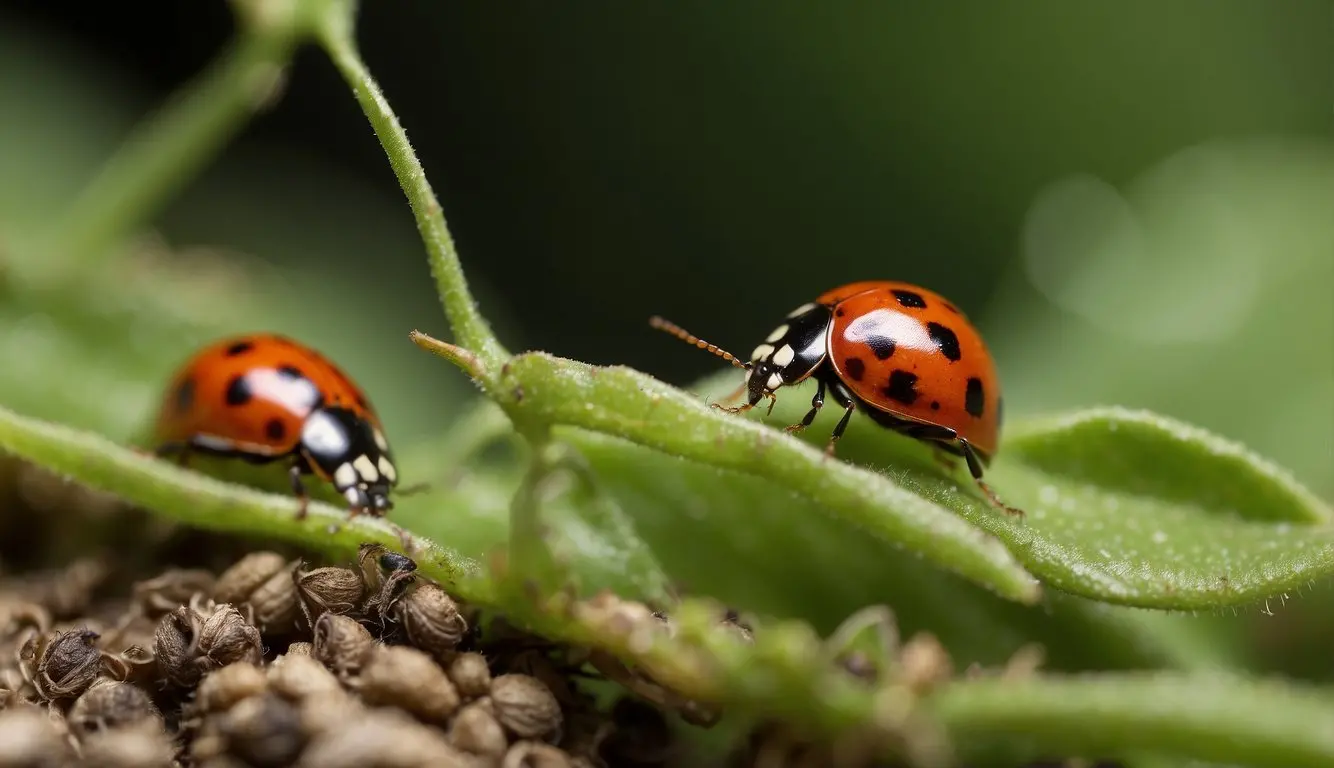
Biocontrol is a type of pest management that has been gaining popularity in recent years. It involves using living organisms to control pests, rather than relying on chemical pesticides. This can include introducing predators that eat the pests, using bacteria or fungi that infect and kill them, or releasing sterile insects that mate with the pests and reduce their population. By using natural methods to control pests, biocontrol can be a safe and effective way to manage infestations in your garden.
Implementing biocontrol in your garden can be a bit more involved than simply spraying pesticides, but it has many advantages. For one, it can be more environmentally friendly, as it doesn’t introduce harmful chemicals into the ecosystem. It can also be more effective in the long run, as pests can develop resistance to chemical pesticides over time. And because biocontrol involves using natural methods, it can be a more sustainable way to manage pests in your garden.
Table of Contents
Understanding Biocontrol in Garden Pest Management
If you’re looking for an eco-friendly and sustainable way to manage garden pests, biocontrol is an exciting option that harnesses the power of ecology and science. Biocontrol is the use of living organisms to control pests and diseases. It is based on the principle of using natural enemies of pests to reduce their populations.
Principles of Biological Control
Biocontrol involves the release of natural enemies of pests, such as predators, parasites, and pathogens. These natural enemies are carefully selected for their ability to target specific pests without harming other beneficial insects or plants. For example, ladybugs are often used to control aphids, while parasitic wasps can be used to control caterpillars.
One of the key principles of biocontrol is the establishment of a balance between the pest and its natural enemies. This balance is achieved by releasing natural enemies in sufficient numbers and at the right time to control the pest population. The natural enemies must also be able to survive and reproduce in the environment.
Integrated Pest Management (IPM)
Biocontrol is often used as part of an integrated pest management (IPM) program. IPM is a holistic approach to pest management that combines multiple strategies to reduce pest populations to a tolerable level. IPM strategies include cultural practices, physical barriers, and chemical control, in addition to biocontrol.
IPM is based on the principle of using the least toxic and most effective methods to control pests. This approach reduces the use of synthetic pesticides, which can have negative impacts on the environment and human health. By using a combination of strategies, IPM can also reduce the risk of pests developing resistance to any one method.
In conclusion, biocontrol is a powerful tool in the fight against garden pests. By using natural enemies of pests, biocontrol can help reduce the use of synthetic pesticides and promote a healthier, more sustainable environment. When used as part of an integrated pest management program, biocontrol can be an effective and long-term solution to pest problems.
Biological Control Agents
When it comes to managing garden pest infestations, biological control agents can be a sustainable and practical approach to reduce pest populations. Biological control agents are living organisms that can be used to control pests in a natural way. There are several types of biological control agents, including predators and parasitoids, microorganisms, and pathogens.
Predators and Parasitoids
Predators and parasitoids are natural enemies of pests. They can be used to control pests by feeding on them or by laying their eggs inside the pests. Some examples of predators and parasitoids include ladybugs, lacewings, and parasitic wasps. These beneficial insects can be purchased and released into your garden to control pest populations.
Microorganisms and Pathogens
Microorganisms and pathogens can also be used as biological control agents. Bacillus thuringiensis, for example, is a type of bacteria that can be used as a biopesticide to control caterpillars and other pests. Other microorganisms, such as fungi and viruses, can also be used to control pests. These microorganisms can be applied as sprays or dusts to the affected plants.
It is important to note that biological control agents are not always effective and may require multiple applications. Additionally, using biological control agents may take longer to see results than using chemical pesticides. However, biological control agents are a sustainable and environmentally friendly option for managing garden pest infestations.
In summary, biological control agents such as predators, biopesticides, microorganisms, natural enemies, pathogens, parasitic wasps, Bacillus thuringiensis, and other beneficial insects can be used to control pests in a natural and sustainable way. By incorporating biological control methods into your pest management strategy, you can reduce pest populations without harming the environment.
Implementing Biocontrol in Gardens
Biocontrol is an effective and sustainable way to manage garden pest infestations. There are two primary methods of biocontrol: habitat management and conservation biological control.
Habitat Management
Habitat management involves creating an environment that is less hospitable to pests. This can be achieved by:
- Planting a diverse range of plants to promote biodiversity and attract beneficial insects and birds that prey on pests.
- Providing nesting sites for beneficial insects and birds, such as birdhouses and bee boxes.
- Removing pest habitats, such as weeds and debris, to reduce shelter for pests.
By implementing habitat management techniques, you can create a healthier ecosystem in your garden that is more resilient to pest infestations.
Conservation Biological Control
Conservation biological control involves using natural enemies of pests to control their populations. This can be achieved by:
- Introducing beneficial insects, such as ladybugs and lacewings, that prey on pests.
- Using microbial pesticides, such as Bacillus thuringiensis, that target specific pests without harming beneficial insects.
- Using pheromone traps to disrupt the mating of pests, reducing their population.
Conservation biological control is a sustainable and effective way to manage pest infestations without relying on harmful pesticides.
By implementing biocontrol methods in your garden, you can create a healthier ecosystem that promotes biodiversity and reduces the need for harmful pesticides.
Advantages of Biocontrol Over Chemical Pesticides
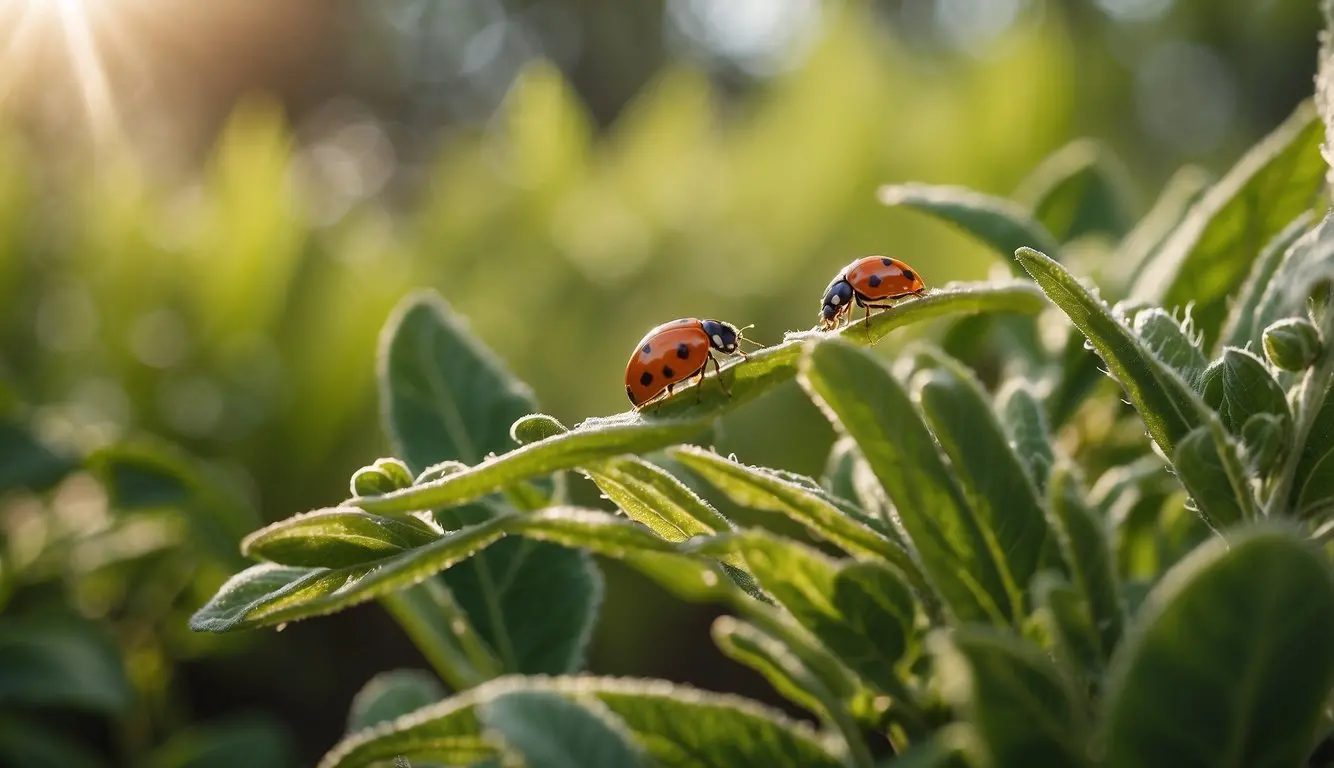
If you are looking for a sustainable and environmentally friendly way to manage garden pest infestations, biocontrol methods are a great option. Biocontrol involves using living organisms to control pest populations, rather than relying on chemical pesticides. Here are some of the advantages of biocontrol over chemical pesticides:
Environmental Impact
One of the biggest advantages of biocontrol is its minimal impact on the environment. Chemical pesticides can have negative effects on non-target organisms, such as beneficial insects, birds, and mammals. They can also contaminate soil and water, leading to long-term environmental damage. In contrast, biocontrol methods are highly targeted, meaning they only affect the pest species they are designed to control. They are also non-toxic to humans and other animals.
Sustainability and Soil Health
Biocontrol methods are sustainable and promote soil health. Chemical pesticides can harm soil microorganisms and reduce soil fertility over time. In contrast, biocontrol methods do not harm soil health and can even promote it by introducing beneficial microorganisms to the soil. This can lead to healthier plants and better yields in the long run.
Overall, biocontrol methods offer a sustainable and environmentally friendly way to manage garden pest infestations. They have minimal impact on the environment, promote soil health, and are highly targeted. If you are looking for a way to control pests without harming the environment, biocontrol methods are a great option to consider.
Common Biocontrol Practices
When it comes to managing garden pest infestations, there are several biocontrol practices that can be used to help control pests and promote a healthy garden ecosystem. Two common biocontrol practices are crop rotation and diversity and the use of biopesticides.
Crop Rotation and Diversity
Crop rotation and diversity is a common practice used in sustainable agriculture to help manage pests and maintain soil health. By rotating crops, you can help prevent the buildup of pests that may be specific to a certain type of plant. Additionally, planting a diverse range of crops can help attract beneficial insects and other organisms that can help control pests.
To implement crop rotation and diversity, you should plan out your garden in advance and choose a variety of crops that are compatible with each other. You should also be mindful of the types of pests that are common in your area and choose crops that are less susceptible to those pests.
Use of Biopesticides
Biopesticides are another common biocontrol practice used to manage garden pests. Biopesticides are made from natural materials and are often less toxic than traditional chemical pesticides.
One type of biopesticide is microbial pesticides, which are made from bacteria, fungi, or viruses that are toxic to specific pests. Another type of biopesticide is plant-incorporated protectants, which are pesticides that are produced by genetically modified plants.
When using biopesticides, it’s important to carefully follow the instructions on the label and apply them at the appropriate time. You should also be aware that biopesticides may not be effective against all types of pests, so it’s important to monitor your garden regularly and be prepared to use other control methods if necessary.
Overall, crop rotation and diversity and the use of biopesticides are two common biocontrol practices that can be used to help manage garden pest infestations. By implementing these practices, you can help promote a healthy garden ecosystem and reduce the need for traditional chemical pesticides.
Biocontrol for Specific Pests

When it comes to managing garden pest infestations, biological control methods can be very effective. By using living organisms to control pest populations, you can avoid the use of harmful chemicals and reduce the risk of harm to beneficial insects and other wildlife. Here are some biocontrol methods you can use to manage specific pest populations:
Managing Insect Pest Populations
Thrips, caterpillars, aphids, spider mites, and whitefly are some of the most common insect pests that can damage your plants. Fortunately, there are several biocontrol methods you can use to keep these pests under control.
One of the most effective ways to control insect pests is to introduce natural predators into your garden. Ladybugs, lacewings, and parasitic wasps are all beneficial insects that can help keep pest populations in check. You can also use biological pesticides made from naturally occurring bacteria and fungi to control insect pests.
Another effective method of controlling insect pests is to use physical barriers. Row covers can be used to protect plants from flying insects, while sticky traps can be used to catch crawling insects.
Control of Plant Diseases
Plant diseases like rust and powdery mildew can quickly spread and damage your plants. Fortunately, there are several biocontrol methods you can use to prevent and control these diseases.
One of the most effective ways to prevent plant diseases is to practice good garden hygiene. This means removing dead plant material, cleaning tools between uses, and rotating crops to prevent the buildup of soil-borne diseases.
Another effective method of controlling plant diseases is to use biological control agents. Certain bacteria and fungi can be used to prevent and control plant diseases. For example, the bacterium Bacillus subtilis can be used to control fungal diseases like powdery mildew.
In conclusion, by using biocontrol methods to manage garden pest infestations, you can avoid the use of harmful chemicals and reduce the risk of harm to beneficial insects and other wildlife. By practicing good garden hygiene, introducing natural predators, and using biological pesticides, you can keep your garden healthy and thriving.
Technological Advances in Biocontrol
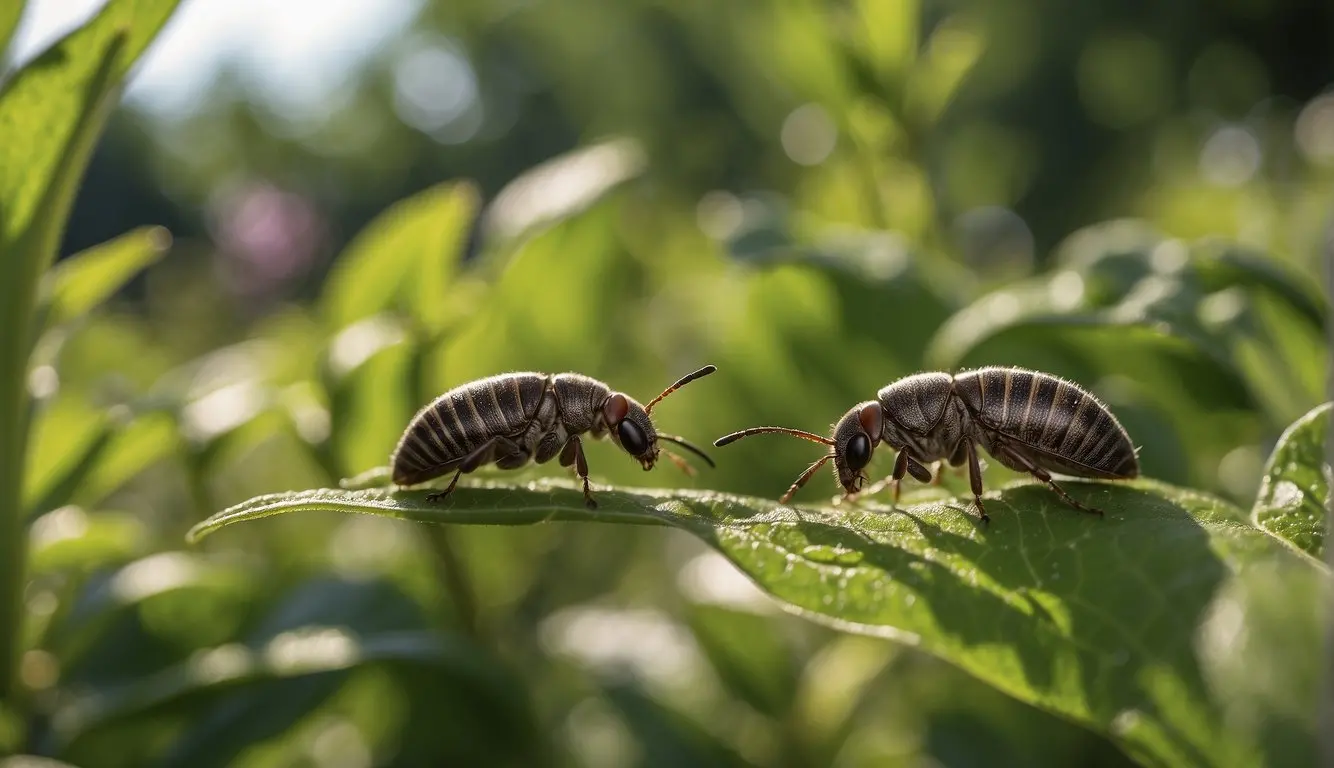
As biotechnology continues to evolve, so do the methods and techniques used in biological pest control. Biocontrol agents, such as parasitoids, predators, and pathogens, are being genetically engineered to better target specific pests. Here are some of the latest technological advances in biocontrol:
Genetic Engineering and Biotechnology
Genetic engineering has allowed scientists to modify the DNA of biocontrol agents to make them more effective at controlling pests. For example, researchers have engineered a strain of the bacterium Bacillus thuringiensis (Bt) to produce a protein that is toxic to certain pests, such as the corn borer. This strain, known as Bt corn, is now widely used in agriculture to control this pest.
Another example of genetic engineering in biocontrol is the development of sterile insect technique (SIT). This technique involves releasing large numbers of sterile male insects into the wild, which then mate with wild females, resulting in eggs that do not hatch. This method has been used to control pests such as the Mediterranean fruit fly.
Biocontrol Product Development
Biocontrol product development has also seen technological advancements in recent years. Pheromones, which are chemicals released by insects to communicate, are being used to disrupt pest mating patterns. By releasing synthetic versions of these pheromones, pest populations can be reduced without the use of harmful chemicals.
Biostimulants, which are substances that stimulate plant growth and health, are also being used to improve the effectiveness of biocontrol agents. By enhancing plant defenses, biostimulants can help biocontrol agents better control pest populations.
Overall, technological advances in biocontrol are providing more effective and sustainable methods for managing garden pest infestations. By using genetic engineering and biotechnology, as well as developing new biocontrol products, we can better target pests and reduce the need for harmful chemical pesticides.
Regulatory and Safety Considerations

Compliance with Agricultural Regulations
When implementing biocontrol methods for managing garden pest infestations, it is important to comply with agricultural regulations to ensure sustainable plant protection and food security. The use of biocontrol agents must be registered and approved by the relevant authorities. Before introducing any biocontrol agents, you should consult with your local agricultural extension office or regulatory agency to determine if they are approved for use in your area.
Human and Environmental Safety
Biocontrol agents are generally considered safe for humans and the environment. However, it is important to follow the recommended safety guidelines to minimize any risks. When handling biocontrol agents, you should wear appropriate protective gear such as gloves and a respirator. You should also avoid applying biocontrol agents near water sources to prevent contamination.
In addition, it is important to consider the potential for residues when using biocontrol agents. While residues are generally lower than those associated with traditional chemical pesticides, it is still important to follow recommended application rates and intervals to minimize any potential risks.
Overall, biocontrol methods offer a sustainable and ecologically sound approach to managing garden pest infestations. By following the recommended safety guidelines and complying with agricultural regulations, you can effectively manage garden pests while minimizing any potential risks to human health and the environment.
Economic Impact of Biocontrol
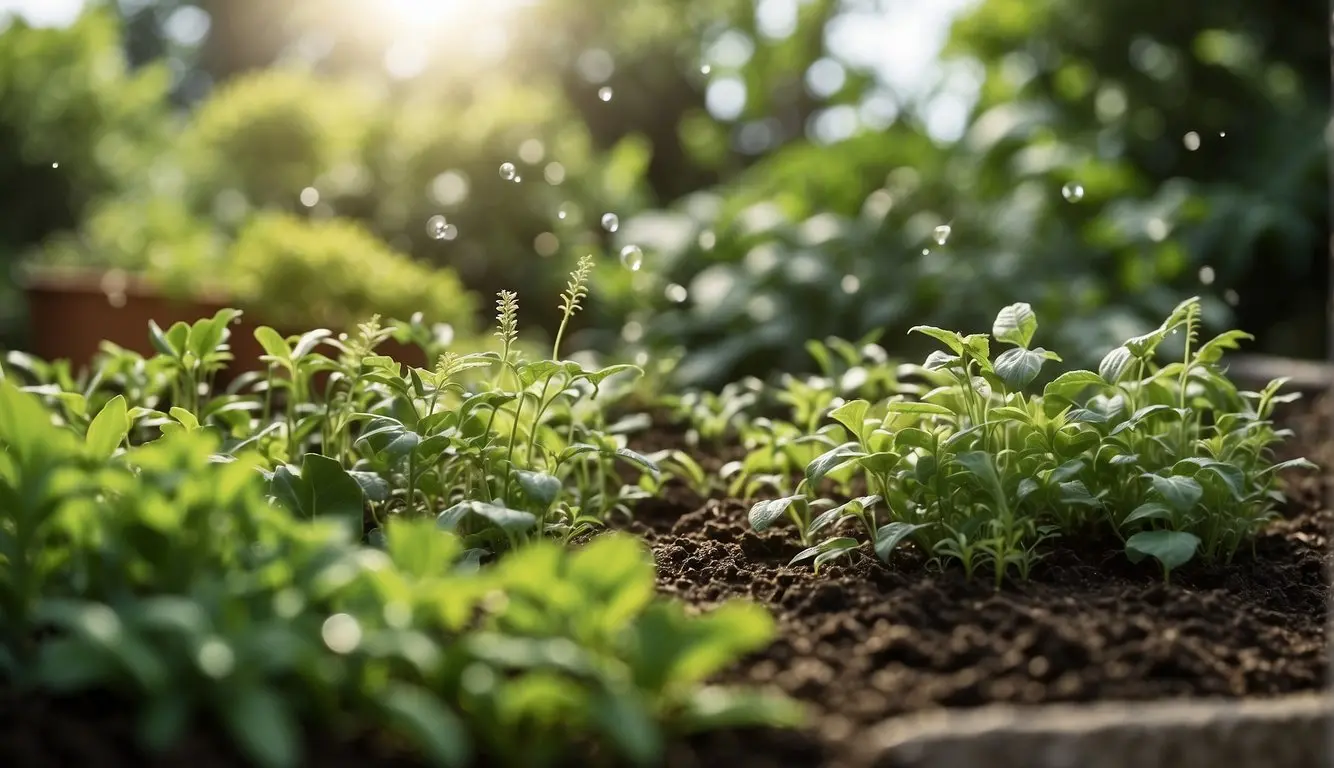
Biocontrol methods have been shown to be cost-effective and sustainable alternatives to conventional pest management techniques. By reducing the use of synthetic pesticides and fertilizers, biocontrol methods can help lower production costs for farmers and improve overall productivity.
Cost-Effectiveness
According to a study published in BMC Microbiology, biocontrol is a cost-effective solution for crop protection against biotic stresses. The study found that biocontrol methods can reduce the use of synthetic pesticides and fertilizers, leading to lower production costs and higher profits for farmers. Additionally, biocontrol methods have been shown to be effective in reducing crop losses due to pest infestations, which can further improve the cost-effectiveness of this approach.
Impact on Global Food Production
As the world population continues to grow, there is an increasing demand for sustainable and efficient methods of food production. Biocontrol methods can play an important role in meeting this demand by reducing crop losses due to pest infestations and improving overall productivity. In addition, biocontrol methods are compatible with organic agriculture, which is becoming increasingly popular as consumers become more aware of the environmental and health impacts of conventional farming practices.
Overall, the economic impact of biocontrol methods is significant, with the potential to improve global food security and reduce the environmental impact of conventional pest management techniques. By reducing the use of synthetic pesticides and fertilizers, biocontrol methods can help improve the sustainability and profitability of agricultural production.
Future of Biocontrol in Pest Management
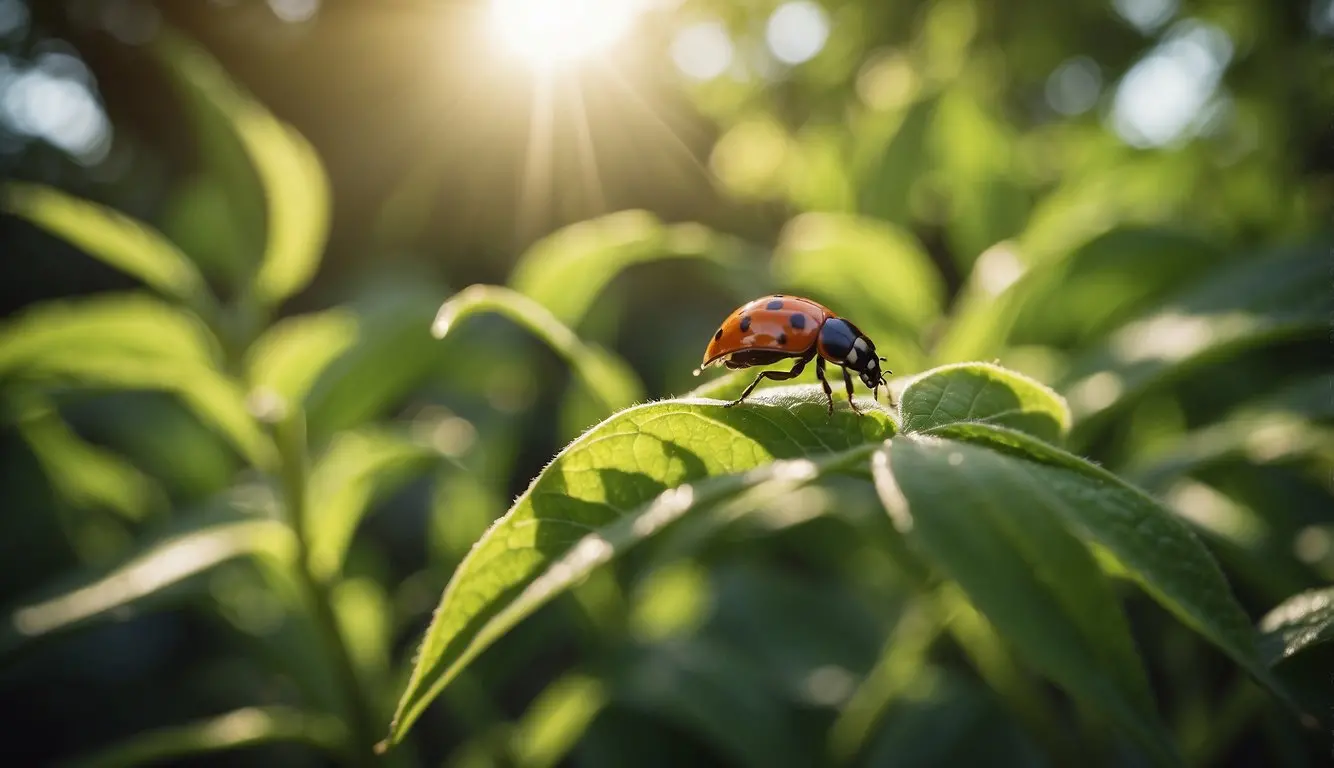
As the world is moving towards sustainable plant protection systems, the importance of biological control (biocontrol) methods in pest management is increasing. Biocontrol involves the use of living organisms to control pest populations, offering a more sustainable and eco-friendly approach to pest management. In this section, we will explore the future of biocontrol and the emerging trends, challenges, and opportunities associated with it.
Emerging Trends
With climate change and the increasing demand for food, biocontrol methods are becoming more popular in the agricultural system. As a result, there is a growing interest in developing new and innovative biocontrol technologies that are effective, efficient, and environmentally friendly. For instance, researchers are exploring the use of RNA interference (RNAi) technology to develop biocontrol agents that can target specific genes in pests, allowing for more targeted and effective pest control.
Another emerging trend is the use of microbial biocontrol agents, such as bacteria and fungi, to control pests. These microorganisms can be used as natural enemies of pests, disrupting their life cycles and reducing their populations. Moreover, microbial biocontrol agents can also enhance the soil quality and promote plant growth, making them a valuable addition to sustainable agriculture.
Challenges and Opportunities
Despite the potential benefits of biocontrol methods, there are also several challenges associated with their implementation. One of the main challenges is the lack of knowledge and awareness among farmers and growers about biocontrol methods. This can lead to a reluctance to adopt these methods, even when they are more effective and environmentally friendly than chemical control technologies.
Another challenge is the variability in the effectiveness of biocontrol agents. Unlike chemical pesticides, biocontrol agents are living organisms that can be affected by environmental factors, such as temperature and humidity. This can make it difficult to predict their efficacy and to develop consistent and reliable biocontrol strategies.
However, despite these challenges, there are also many opportunities associated with biocontrol methods. For instance, biocontrol methods can help to restore the natural food web, promoting biodiversity and ecological balance. Moreover, biocontrol methods can also reduce the reliance on chemical pesticides, which can have negative impacts on the environment and human health.
In conclusion, the future of biocontrol in pest management looks promising, with emerging trends and technologies that offer new opportunities for sustainable agriculture. However, there are also challenges that need to be addressed, such as the lack of knowledge and variability in efficacy. By addressing these challenges, we can ensure that biocontrol methods become an integral part of sustainable agriculture, promoting ecological balance and food security.
Frequently Asked Questions
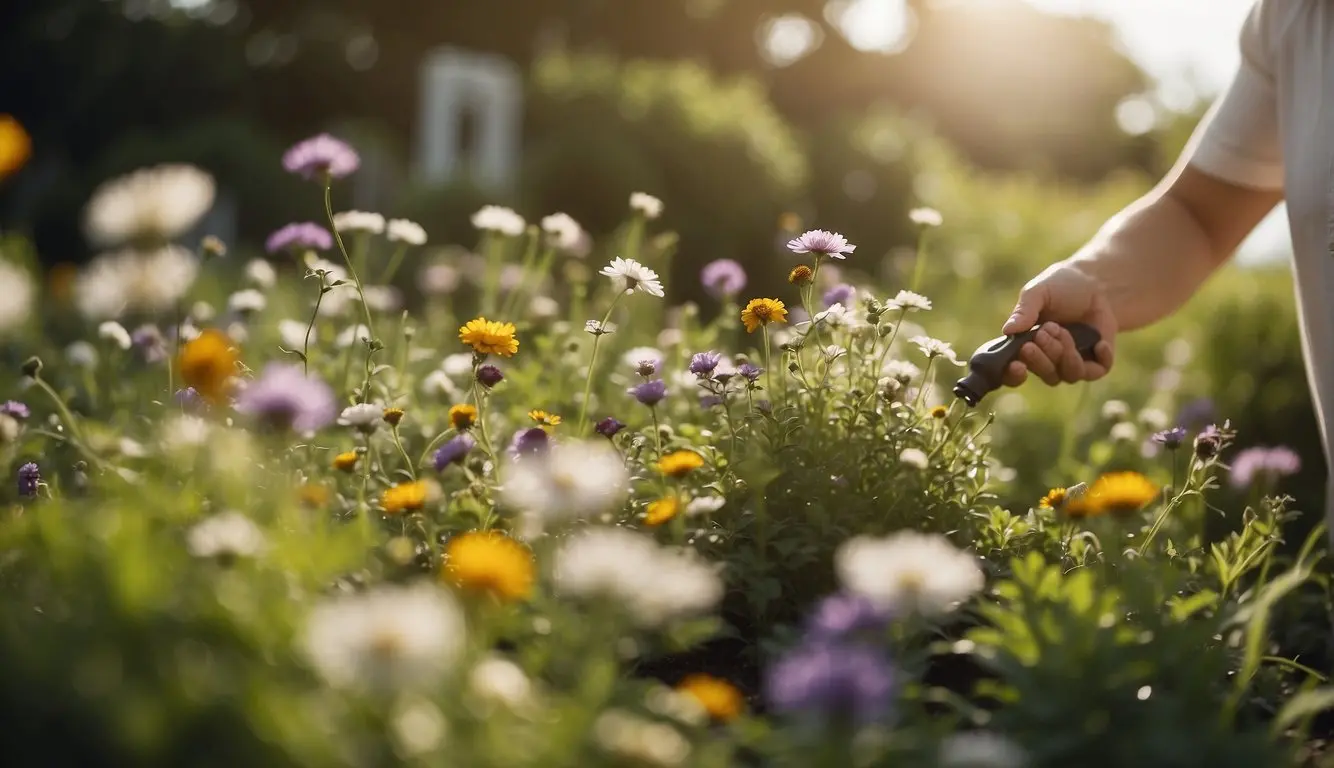
What are the primary methods of biological pest control in gardens?
Biological pest control methods involve the use of natural enemies of pests to manage their populations in gardens. The primary methods include conservation, augmentation, and inoculation. Conservation involves creating a favorable environment for natural enemies to thrive in the garden. Augmentation involves releasing natural enemies into the garden to control pest populations. Inoculation involves the introduction of pathogens or parasites to the garden to control pests.
How do biocontrol agents help in managing garden pest populations?
Biocontrol agents are natural enemies of pests that help in managing garden pest populations. They include predators, parasites, and pathogens. These agents attack and kill pests, reducing their populations in the garden. Biocontrol agents are effective in managing pest populations because they are specific to the pest they target and do not harm other beneficial organisms in the garden.
Can you provide examples of how augmentation with natural enemies controls pests?
Augmentation with natural enemies involves the release of biocontrol agents into the garden to control pest populations. For example, ladybugs are released into the garden to control aphids. Nematodes are released into the soil to control soil-borne pests like grubs and root maggots. Parasitic wasps are released into the garden to control caterpillars.
What are the benefits and drawbacks of using biological control for garden pests?
The benefits of using biological control for garden pests include reduced use of chemical pesticides, improved plant health, and reduced environmental pollution. However, the drawbacks include the need for careful planning and management, the potential for unintended harm to beneficial organisms, and the risk of biocontrol agents becoming pests themselves.
How does conservation of natural enemies aid in biological pest management?
Conservation of natural enemies involves creating a favorable environment for their growth and reproduction in the garden. This includes providing shelter, food, and water sources for natural enemies. Conservation of natural enemies aids in biological pest management by promoting the growth and reproduction of natural enemies in the garden, which in turn helps to control pest populations.
What is inoculative biological control and how is it applied in horticulture?
Inoculative biological control involves the introduction of natural enemies into the garden in small numbers to establish a permanent population that can control pest populations. This method is applied in horticulture by releasing natural enemies at critical stages of pest development, such as during the egg or larval stages. The natural enemies then establish a population in the garden and provide long-term control of pests.
- Best Brush Cutter: Top 5 Models for Lawn Maintenance in 2024 - January 10, 2024
- Protecting Your Garden from Rodent Damage: Tips and Tricks - December 14, 2023
- Small Space Gardening: Transform Your Garden with Raised Beds - December 10, 2023
